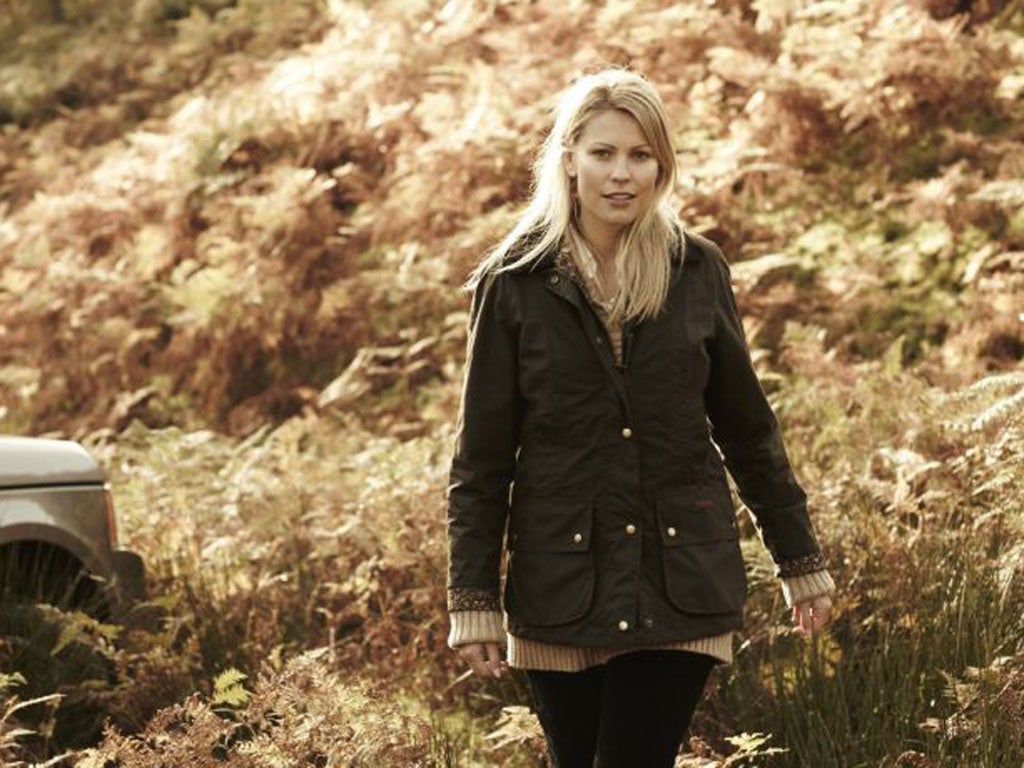Fashion conscious urbanites hand British brand Barbour a profit hike

Before the Kate Middleton effect had retailers chasing their tale to cater to the middle market, another Kate had the ability to send shoppers stampeding. A certain Miss Moss must in part take credit for the recent revival of British brand Barbour after the supermodel wore one of the brand's signature jackets to Glastonbury in 2009.
Though sales have been strong for years both at home and internationally, the family owned company today posted an operating profit of £17million, an increase of over £5million on 2010's figures, thanks in part to fashion conscious urbanites.
Established in South Shields in 1894 by a Scot John Barbour, the company began life as a shop selling waterproof oilskin outerwear for the local fishermen, sailors and dockyard workers as well as other work wear. Over a hundred years later the company is still based in the north east of England, and is now overseen by the fifth generation. Originally a brand which catered to more rural pursuits such as hunting, fishing and farming, Barbour provided oilskins to the military in both world wars, while members of the submariner service wore the brand's waterproof jackets and trousers in ww2.
In 1957, Barbour went from retailer to manufacturer as production moved in-house to a factory on the outskirts of South Shields. In 1974 Barbour received its first royal warrant - to provide clothing for the Duke of Edinburgh, which was followed in 1982 and 1987 with warrants for The Queen and Prince of Wales respectively. For many years the brand focussed on outerwear, specifically waxed jackets and quilted jackets lined in the signature tartan, and happily catered to the country set.
Until June 2009 that is, Kate Moss and Alexa Chung were snapped at Glastonbury sporting Barbours. Since then, city-dwellers have been drawn to the aristocratic heritage connotations of the brand, whether ironically or aspirationally.
In east London, creative types wear wax jackets with their turned up jeans and brogues, while City boys favour quilted styles over their suits.
Since 2009, the 'Hackney Farmer' look has grown exponentially, and as today's profits suggest, despite plenty of high-street 'homages', customers still want to buy an authentic slice of country style. “Interestingly, given its status as a countryside must-have, Barbour is most popular in our city branches,” says Matt McCormack, director of buying, Fashion at John Lewis.
“Barbour is a strong selling brand,” says McCormack. “It has long been popular with our customers in menswear, womenswear and childrenswear. However it was in early 2011 that sales really took off for us, as customers began to view Barbour jackets not just as a practical purchase but also a stylish one.”
Barbour has branched further into the field of fashion with an annual product range numbering 2000, and collaborations with Liberty and William Morris on alternative linings as well as British designers Paul Smith and, Kate Middleton favourite, Alice Temperley.
The Barbours, who awarded themselves a £10million dividend in 2011, may want to keep some of those funds in a safe place though as the brand has experienced saturation point before. In 1981 Princess Diana caused sales to soar, before the Sloane ranger's reign of terror sent them plummeting.
Join our commenting forum
Join thought-provoking conversations, follow other Independent readers and see their replies
Comments